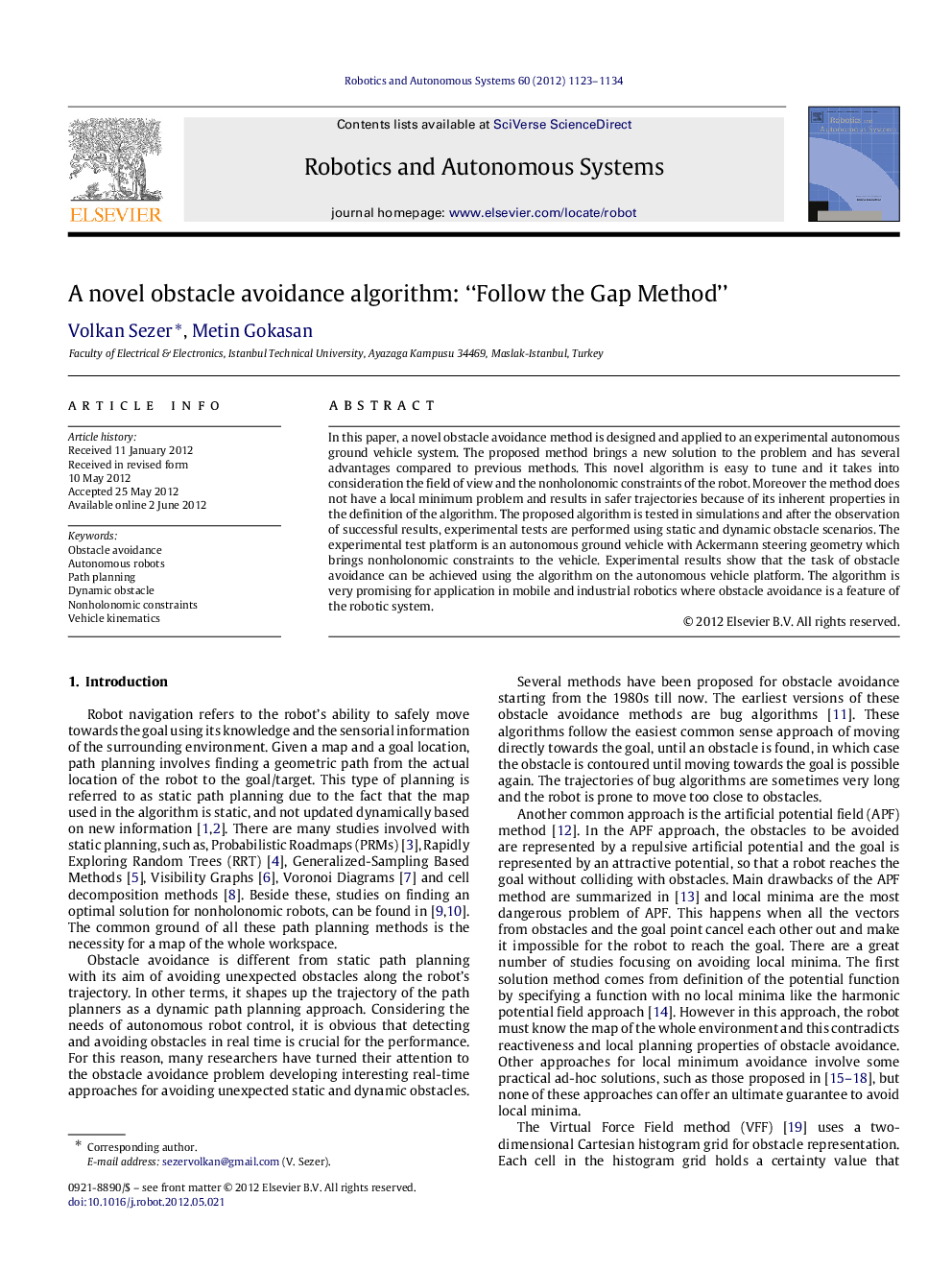| Article ID | Journal | Published Year | Pages | File Type |
|---|---|---|---|---|
| 412431 | Robotics and Autonomous Systems | 2012 | 12 Pages |
In this paper, a novel obstacle avoidance method is designed and applied to an experimental autonomous ground vehicle system. The proposed method brings a new solution to the problem and has several advantages compared to previous methods. This novel algorithm is easy to tune and it takes into consideration the field of view and the nonholonomic constraints of the robot. Moreover the method does not have a local minimum problem and results in safer trajectories because of its inherent properties in the definition of the algorithm. The proposed algorithm is tested in simulations and after the observation of successful results, experimental tests are performed using static and dynamic obstacle scenarios. The experimental test platform is an autonomous ground vehicle with Ackermann steering geometry which brings nonholonomic constraints to the vehicle. Experimental results show that the task of obstacle avoidance can be achieved using the algorithm on the autonomous vehicle platform. The algorithm is very promising for application in mobile and industrial robotics where obstacle avoidance is a feature of the robotic system.
► A novel obstacle avoidance method with several advantages is designed. ► The algorithm results in safer trajectories. ► The algorithm has no local minimum problem. ► The algorithm is easy to tune and considers nonholonomic constraints. ► The algorithm is tested in both simulated and real robot experiments.
